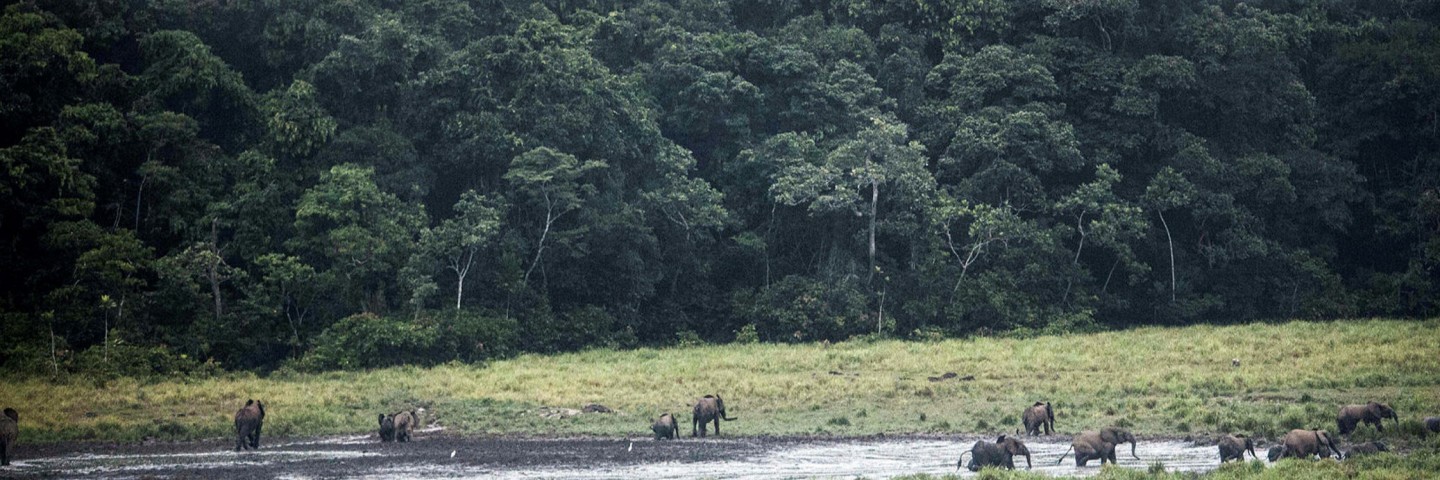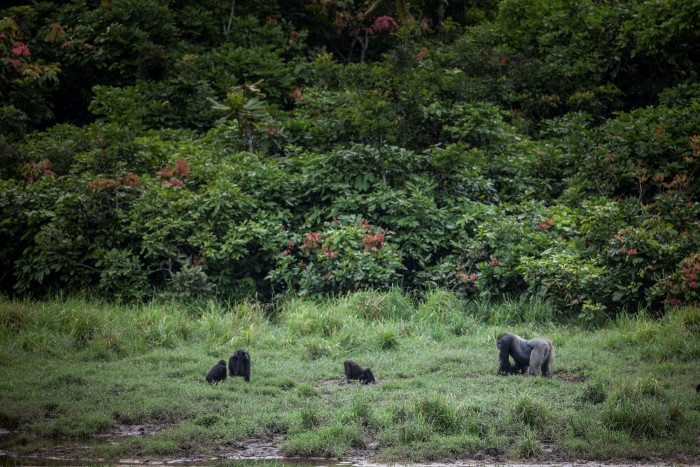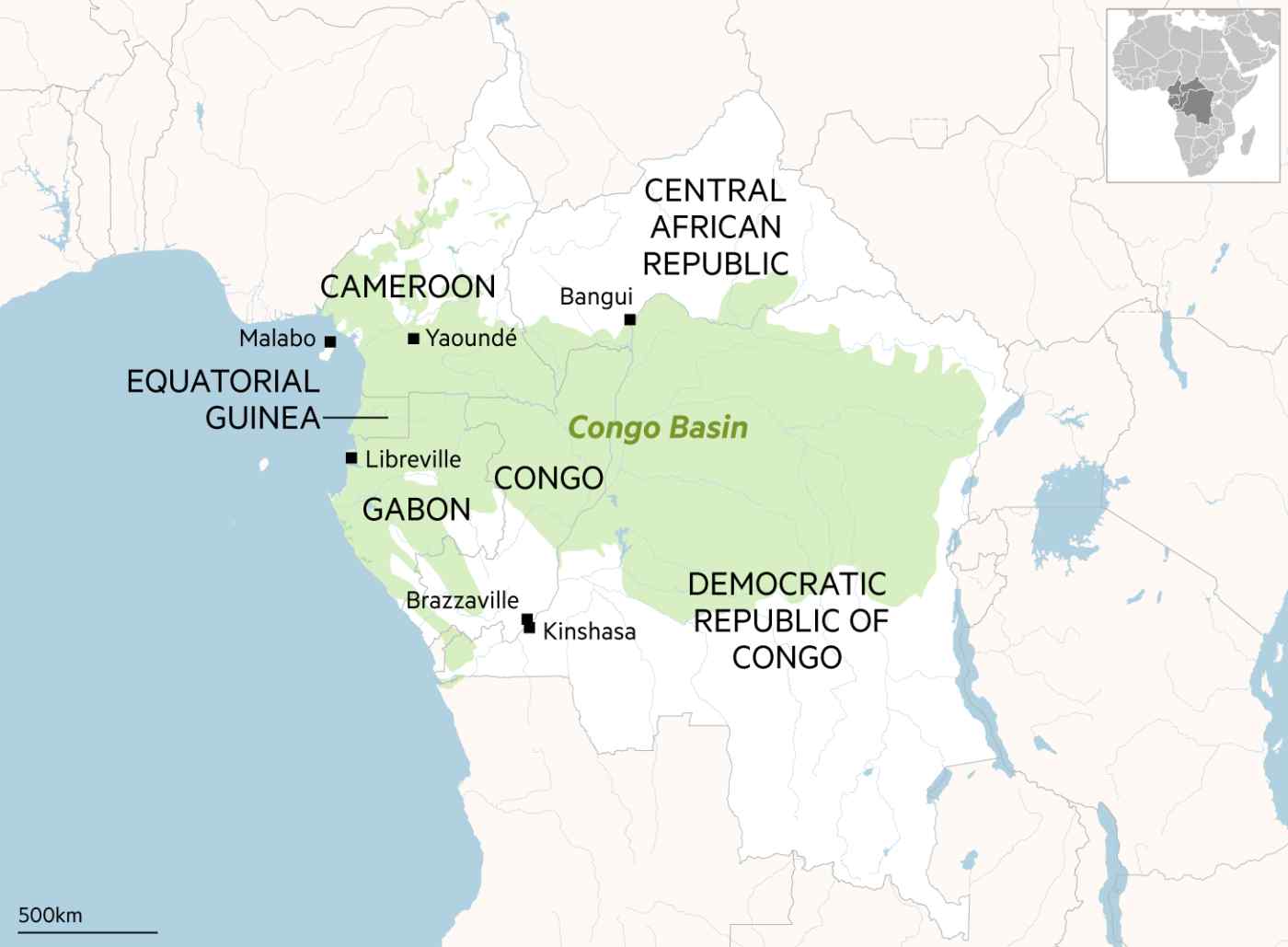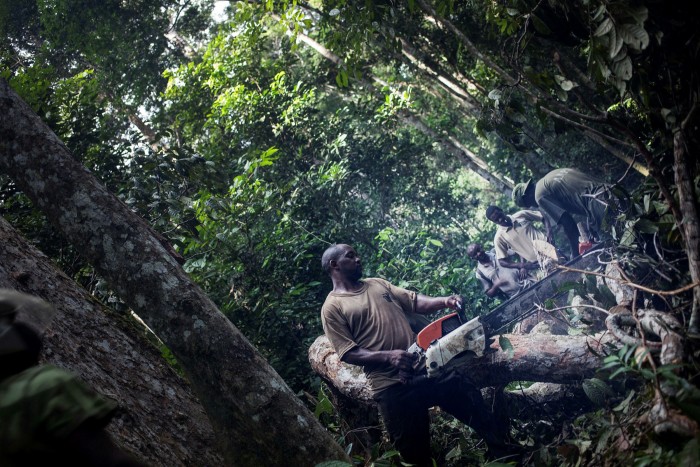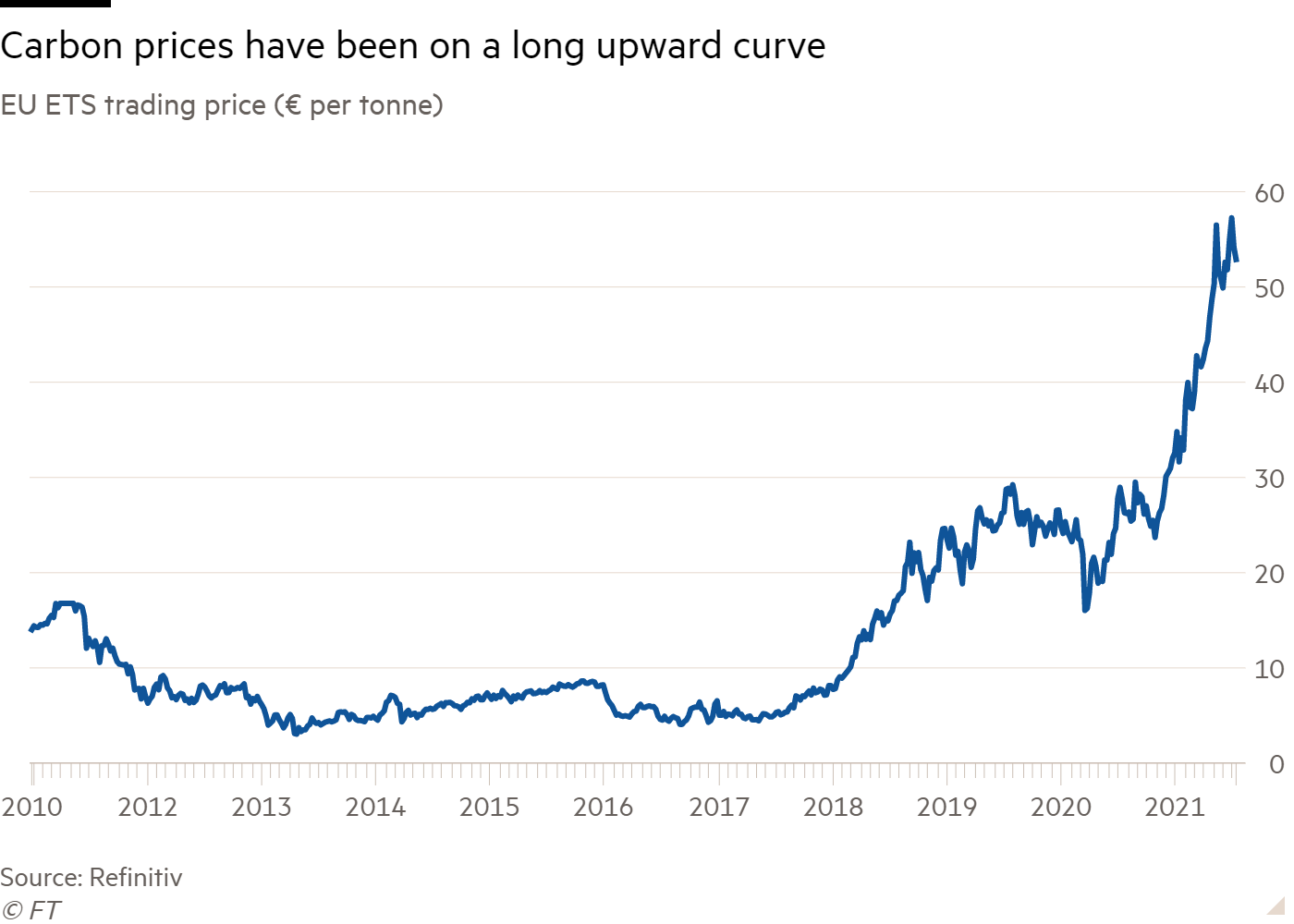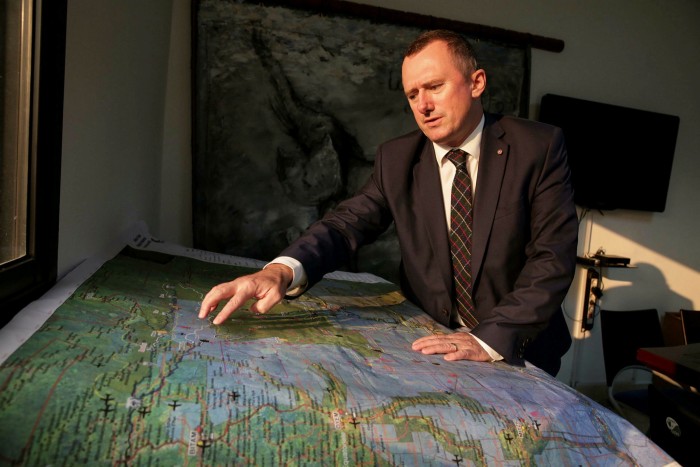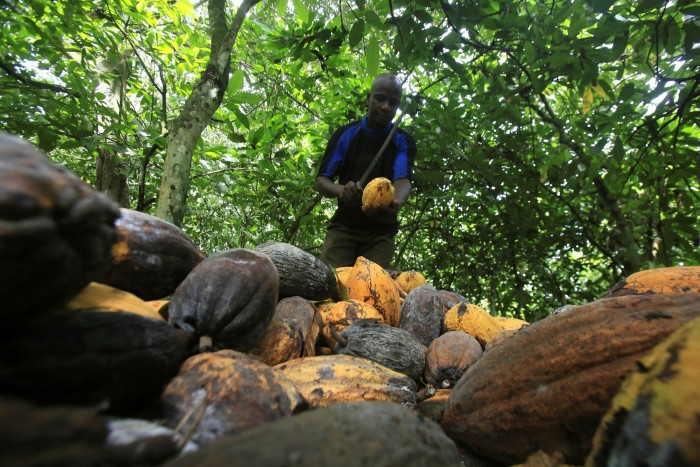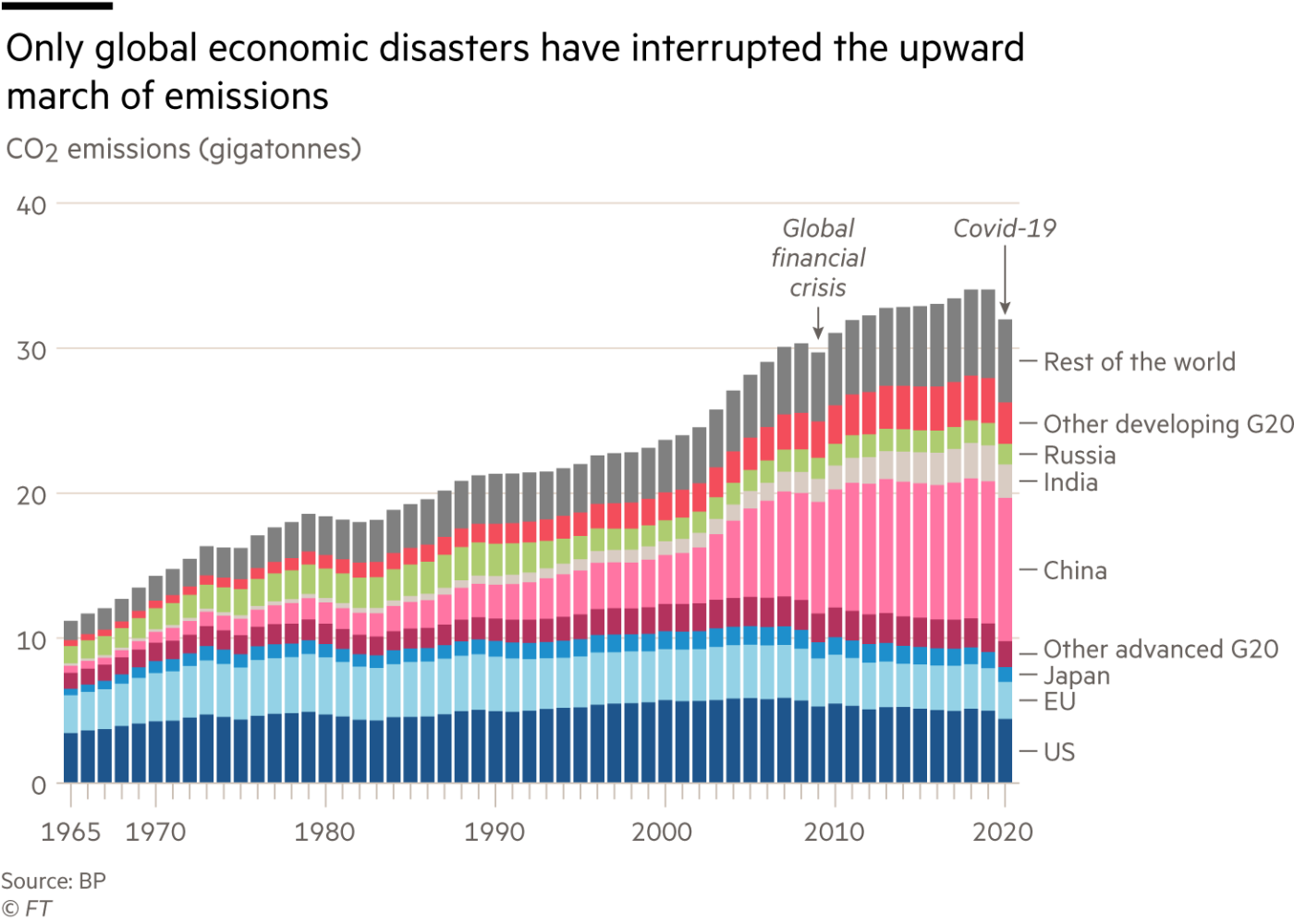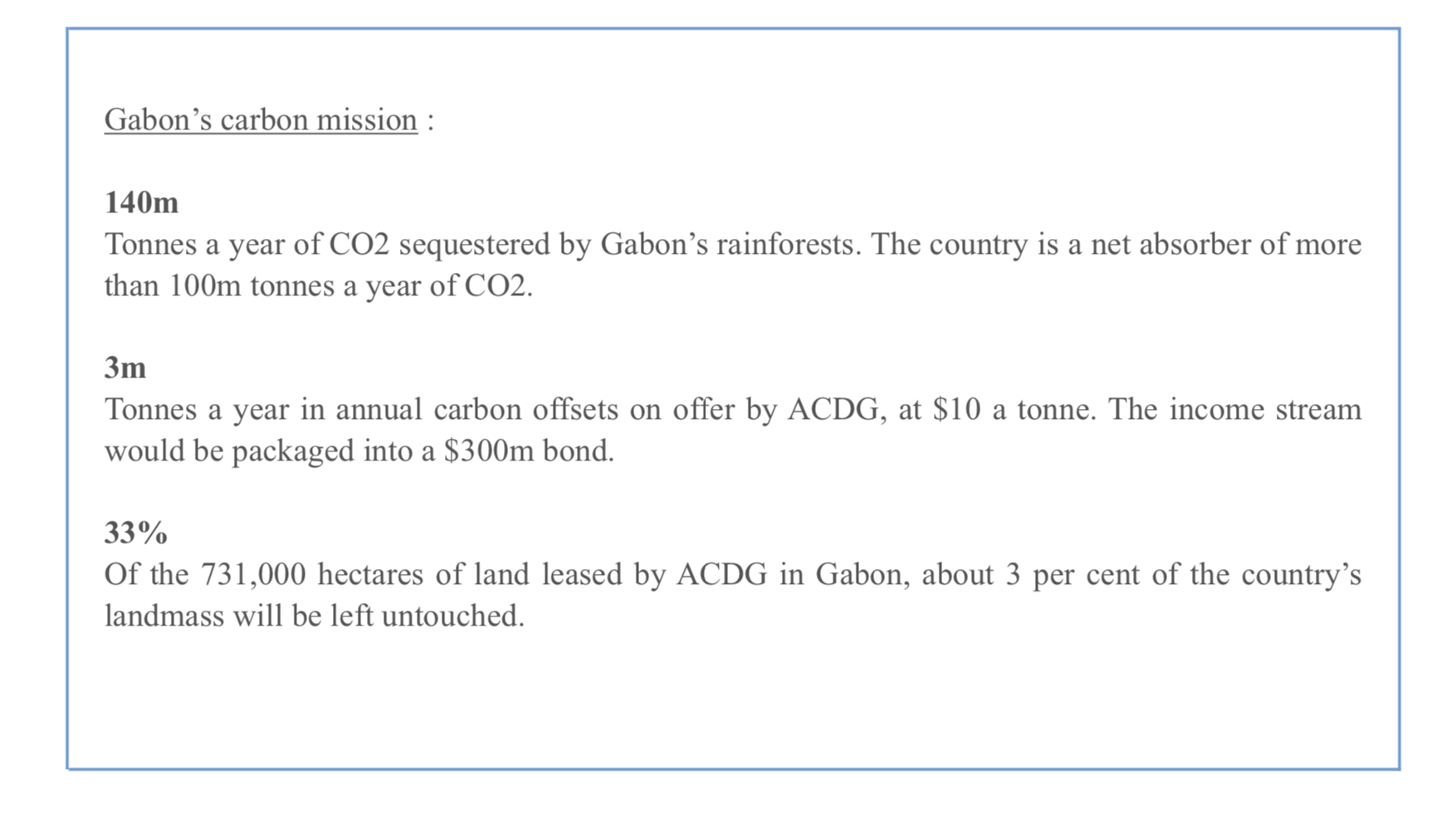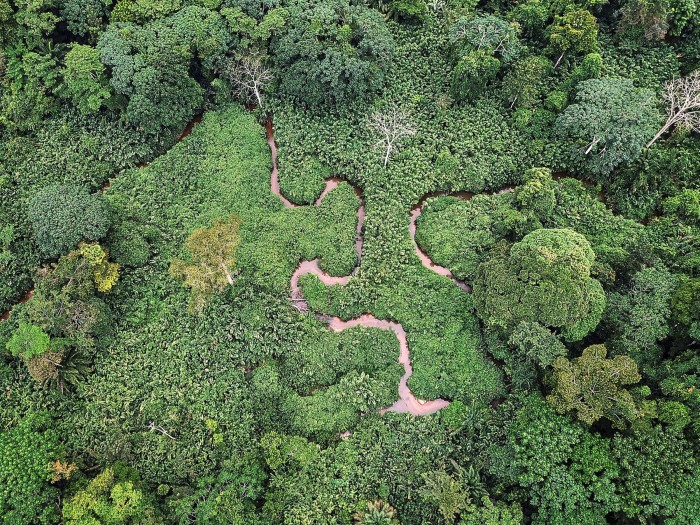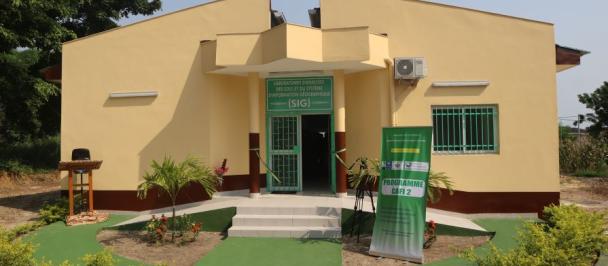Published by David Pilling in the Financial Times on July 20th 2021
Africa’s Green Superpower: Why Gabon wants markets to help tackle climate change
27 juillet 2021
Sweat pouring down his face, Iftikhar Ali, a bond trader and former hedge fund manager, is nervously tramping to his next appointment. The encounter will take place not in the City of London but under the canopy of the Gabonese rainforest. And the client he is meeting, who goes by the name of Kamaya, is a lowland silverback gorilla.
After years in which its economy depended on oil, Gabon is seeking to reposition itself as a “green superpower”. A rare high-income country in Africa, with a nominal per capita income of $8,600, Gabon wants to diversify as oil reserves dwindle. It also wants recognition for preserving its tropical forests, part of the great Congo Basin rainforest — the “lungs of Africa” that are the planet’s most important forest ecosystem after the Amazon.
Ali, director of debt capital at African Conservation Development Group, a Mauritius-incorporated company that specialises in land stewardship, is researching both an eco-tourism project and the launch of a bond he hopes will raise up to $300m. Its underlying asset will be the forest that absorbs millions of tonnes of carbon, creating a stream of potentially marketable carbon credits.
“Every sizeable corporation in the world has made a commitment to net zero,” Ali says of a string of carbon emissions pledges, some more credible than others, by companies from Shell to British Airways and from Unilever to Microsoft.
“Either they have to invest in technology to reduce their emissions or they have to buy carbon offsets. And ACDG can generate a stream of carbon credits,” he says, referring to the company’s 50-year concession to a huge tract of forest, roughly 3 per cent of Gabon’s landmass.
Ali hopes to clinch contracts with companies seeking offsets for a total of 3m tonnes a year of carbon credits over 10 years, charging a minimum $10 a tonne. ACDG would package the income stream into a bond priced at a slight premium to Gabonese sovereign debt.
“If that offtake agreement were to take place, it would be one of the biggest ever,” he says. “If we are able to issue a bond, it would set an important precedent for Gabon, which would then be able to issue similar bonds itself.”
Gabon in central Africa is one of the world’s few net sequesters of carbon along with a handful of other countries such as Guyana and Bhutan. Some 85 per cent of Gabon’s land is covered in carbon- absorbing rainforest, an area about the size of the UK. It has a population of just 2m, 90 per cent of whom are urban, and no major highways.
Each year, Gabonese forests emit about 20m tonnes of carbon through natural decay, fires and deforestation. Human activity from industry to providing power to Libreville, the capital, emits about 15m tonnes more. But the rainforest sequesters roughly 140m tonnes annually, making Gabon a net absorber of more than 100m tonnes a year, according to calculations submitted to the UN Framework Convention on Climate Change. Gabon absorbs about one-third of the carbon France emits.
“Gabon’s carbon sequestration is good for the world,” says Marthe Mapangou, deputy director of the country’s National Parks Agency. “So the world has to put its hand in its pocket.”
Rainforest conservation
The idea of “natural capital” as a factor in economic activity is gaining traction and could become a pillar of climate change policy. In February, a report commissioned by the UK government entitled The Economics of Biodiversity attempted to quantify the role played by “ecosystem services” such as carbon-absorbing forests and nutrient-recycling soil. Its author, Cambridge professor Sir Partha Dasgupta, argues that any rational economic system must incorporate nature into its models. “Much of nature is free and, if we don’t pay for something, we overexploit it,” he says.
Dasgupta favours the establishment of an international institution akin to the World Bank or IMF that would monitor and manage the global commons, including the high seas, the atmosphere, and biomes such as tropical rainforests and peatlands. “The institution would charge those using the global commons for the traffic they bear and for fishing and mining,” he says. It should, he says, also charge them for using the atmosphere as a sink for pollutants.
Gabon’s government wants to be paid too. “People say you can’t be paid for what is a natural process,” says Tanguy Gahouma-Bekale, permanent secretary of Gabon’s national climate council, referring to its role in carbon absorption. “But we say No. It’s more than 30 years of policy that have preserved our forests. This is not a natural process; it’s a vision.”
Eco-guards of the National Parks Agency use a chainsaw to clear a track at the Ivindo national park © Amaury Hauchard/AFP/Getty
Gabon’s rate of deforestation is low at about 0.1 per cent a year, according to satellite monitoring. That is partly because its forests are so vast and its population so small. But it is also the result of deliberate choices.
In 2002, former president Omar Bongo created 13 national parks covering 11 per cent of the country in which logging was banned. Subsequently, conservation areas have been extended to about 17 per cent of Gabon. The government passed a forestry law stipulating that companies must log sustainably by harvesting trees on a 25-year rotating basis. Though the law has not always been adequately enforced, it has kept deforestation in check.
In 2010, Ali Bongo, who was elected president after his father’s death, stunned the foreign timber industry by banning the export of unprocessed logs. The ban was aimed both at conservation and at lifting domestic value-added production. Turning a raw log into sawn sections, plywood or furniture increases its value several fold. Sustainable forestry can actually sequester more carbon, say advocates, because it allows in light, encouraging more carbon-capturing forest growth.
Emitters vs sequesters
Gabon has not always been an exemplar of conservation. Only two years ago, the vice-president and forestry minister were both fired after a timber-smuggling operation in which 300 containers of kevazingo, a precious hardwood banned from export, were found at a port outside Libreville.
Still, Gabon’s forests are in much better shape than those of neighbouring countries such as Cameroon and Republic of Congo. In the Democratic Republic of Congo, a western-European-sized country of 87m people, rural population pressure and rampant logging is destroying some 500,000 hectares of rainforest annually. DRC’s rate of deforestation is second only to Brazil’s.
“If we can’t quickly turn that around we’re in big trouble,” says Lee White, Gabon’s environment minister. Good policies, he says, can reverse the rot. “Costa Rica completely trashed their forest and they were down to about 20 per cent,” he says. A policy shift in the mid-1990s halted and then reversed the damage and forests now cover more than half of Costa Rica.
If deforestation in the Congo Basin is not stopped, its forests could go into terminal decline. Once huge forest expanses in west Africa, including Ghana, Ivory Coast and Sierra Leone, have dwindled to almost nothing as cash crops such as cocoa, palm oil and rubber take over. Brazil’s Amazon rainforest has become a net carbon emitter over the past decade as burning and logging releases more carbon into the atmosphere than it can absorb.
Lee White: ‘If we don’t get this right, we will kill off agriculture in Egypt and you’ll have 100m refugees flooding to Europe’ © Steve Jordan/AFP/Getty
The idea that Gabon and other countries should be paid for the carbon they trap is not as far-fetched as it sounds. Last month, the Central African Forest Initiative (Cafi), a Norwegian-backed fund, paid Gabon an initial $17m instalment of a projected $150m for doing precisely that. Lee White: ‘If we don’t get this right, we will kill off agriculture in Egypt and you’ll have 100m refugees flooding to Europe’ © Steve Jordan/AFP/Getty
Gabon’s carbon cuts were verified using criteria known as REDD, or reducing emissions from deforestation and forest degradation. Although it accepted the cash, Gabon rejects the methodology underlying REDD, which pays countries for reversing damage to forests, not for preserving them.
“It’s amazing that the world is more interested in stopping deforestation in Brazil than rewarding countries like Gabon that want to keep their forests intact in the first place,” says Gahouma-Bekale, who is also chair of the African Group of Negotiators at November’s COP26 climate change conference in Glasgow, where carbon markets will be a big theme.
Once huge forest expanses in west Africa, including Ghana, Ivory Coast (pictured) and Sierra Leone, have dwindled to almost nothing as cash crops such as cocoa, palm oil and rubber take over © Legnan Koula/EPA- EFE
Gabon is already feeling the effects of man-made climate change for which it bears no responsibility. Trees in Gabonese forests are producing less fruit, driving the population of 60,000 forest elephants to search for food in villages where they clash with humans.
Gabon’s forests, say scientists, help regulate rainfall around much of Africa, a continent already plagued by desertification and changing rainfall patterns. Although Africa is responsible for only 2-3 per cent of global carbon emissions, it is among the most vulnerable to extreme weather shifts, partly because most farmers rely on rain-fed agriculture.
Across the continent, there are signs of increasing weather extremes. Cape Town suffered an unprecedented drought in 2018. The following year Mozambique was struck by one of the worst-ever cyclones to affect the southern hemisphere, a catastrophe that cost 1,300 lives.
In 2010, Ali Bongo stunned the foreign timber industry by banning the export of unprocessed logs © Paul Grover/Shutterstock
Scientists have linked Gabon’s forests to rainfall in the Sahel, a semi-arid strip running beneath the Sahara, where deteriorating climate conditions have already contributed to clashes between herders and farmers and an upsurge in Islamist militancy. As part of the Congo Basin forest system, Gabon even produces rainfall as far afield as the Ethiopian highlands, which in turn replenishes the Nile on which Egypt is existentially de
“This is the story of climate change in Africa,” says White. “If we don’t get this right, we will kill off agriculture in Egypt and you’ll have 100m refugees flooding to Europe.”
Environmental assets
Berta Pesti, head of the secretariat of the Central Africa Forest Initiative that paid Gabon $17m, is sympathetic to arguments that its methodology fails to reflect the true value of Gabon’s rainforest.
“Unfortunately, the accounting methodologies that have been used focus on rewarding past emitters who have reformed,” she says. The urgency of stopping deforestation in countries like Brazil, Malaysia and Indonesia has overshadowed the issue of “how to find incentives that help countries stay on the right path”.
Pesti hopes that COP26 can address the issue. “It would be revolutionary because it would fit perfectly the narrative that standing forests should represent a kind of asset to a national economy and a global public good,” she says.
Back in the forest, Ali and his colleagues at ACDG are getting closer to the gorillas, some 30,000 of which live in Gabon. ACDG styles its Grande Mayumba project in the south of the country as a large- scale “nature-based solution”, one that can derive economic value by stewarding the land.
As part of its plans, it intends to develop a low-volume, high-value tourism industry — in a country with virtually no existing tourist infrastructure — based around natural assets, including gorillas.
Rwanda and Uganda have shown the way. Though they have fewer than 1,000 mountain gorillas between them, they have been able to extract economic value by charging, in Rwanda’s case, $1,500 for an hour-long viewing permit. Rwanda earns $300m a year from gorilla tourism. As a result, gorilla numbers have recovered — evidence that putting an economic value on nature can help preserve it.
Of the 731,000ha ACDG has leased in Gabon, it has pledged to leave one-third untouched. Separately, it will develop a sustainable timber business, providing local income and jobs in a way that, it says, will actually increase the amount of carbon sequestered. Its claims are being verified by third parties, including the Forest Stewardship Council.
Recommended
In addition, it will raise 20,000 cattle on one of Gabon’s few natural grasslands alongside buffalo and other wildlife and improve degraded soil quality so as to increase carbon sequestration, it says. At the moment, wealthy Gabonese eat imported beef and poor ones eat bushmeat.
Although some environmentalists regard rearing cattle as the antithesis of sustainability, ACDG argues that establishing a domestic cattle industry in a country almost entirely dependent on food imports — a legacy of distortions caused by oil wealth — will cut carbon emissions. In conjunction with the University of Stirling and the London School of Economics, its forestLAB innovation hub will develop what it calls “best practice for sustainable development”.
Alan Bernstein, chairman and co-founder of ACDG, says Gabon must strike a balance between preserving natural assets and developing its economy. It cannot be asked to stand still just because developed countries have brought the world to the brink of climate catastrophe, he says. “Gabon is positioning itself as a natural capital superpower. But its people have to live, they have to have jobs.”
ACDG calculates that its conservation and land management efforts will generate more than 8m tonnes a year of carbon credits to be verified by VCS, a certifier, of which 3m will be bundled in a bond it hopes to issue this year. But its sums depend on a counterfactual: that its planned land use will result in less deforestation and better land management than business as usual.
Western lowland gorillas at Langoue Bai in the Ivindo national park. Some 30,000 gorillas live in Gabon © Amaury Hauchard/AFP/Getty
Pesti at the Central African Forestry Initiative welcomes ACDG’s attempt at financial innovation but says markets may not be ready to accept hypotheticals. “A comparison to a business-as-usual scenario depends on so many assumptions,” she says. “It’s very difficult to verify and there’s quite a lot of scepticism.”
Mark Maslin, professor of earth systems science at University College London, says that, in judging projects like ACDG’s, “the magic word is additionality”. If the company’s activities change land use in ways that demonstrably avoid carbon emissions or enhance carbon capture then its claims would be valid, he says.
On a sovereign level, Maslin says, climate discussions have not caught up with the idea of incentivising good behaviour. “Gabon can’t be paid for the forest just standing there and doing what a forest does,” he says. “Unfortunately they are going to be penalised for being good citizens and there’s nothing really we can do about that. It’s not fair, but that’s how it is.”
Gabon’s rate of deforestation is low at about 0.1 per cent a year, according to satellite monitoring © Westend61 GmbH/Alamy
If Gabon’s rainforests provide unpaid ecosystem services, there is another way of seeing them: a bomb waiting to go off if its natural capital is depleted. Above and below ground, its forests store a combined 26.5 gigatonnes of carbon, about five year’s worth of US emissions.
Gabon rejects any suggestion of blackmail, pointing to its record of conservation. “You won’t find a single speech anywhere saying: ‘If you don’t pay us we’re going to cut our forests down,’” says White, the environment minister.
Gahouma-Bekale at the national climate council puts it differently. “The question is for the people in New York and London who produce all the carbon but who can still breathe because of the forests of Africa,” he says. “If you people put in just $1 a year each, you will still be able to breathe.”

 Locations
Locations